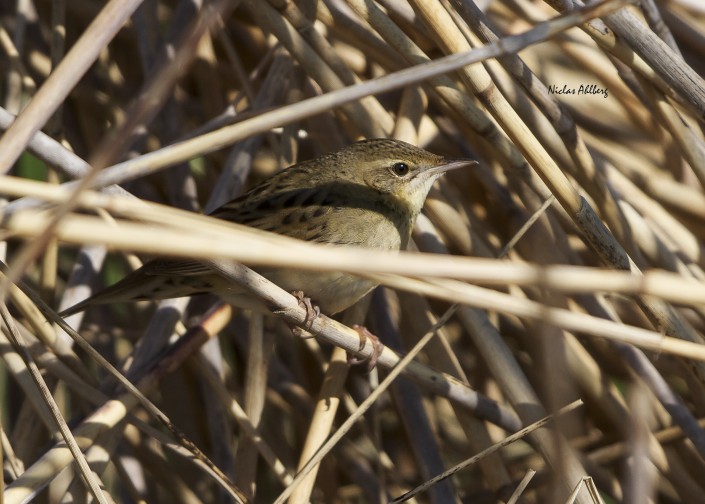This post is also available in: Swedish
Grasshopper warbler – Locustella naevia
Grasshopper warbler – Locustella naevia
Grasshopper warbler – Locustella naevia is species of Old World warbler in the grass warbler genus Locustella. It breeds across much of temperate Europe and western Asia. It is migratory, wintering in north and west Africa.
This small passerine bird is found in short dense vegetation, often close to water. It is a medium-sized warbler about 13 cm (5 in) long. The adult has a streaked brown back and whitish grey underparts which are unstreaked except on the undertail coverts. The sexes are identical, as with most warblers, but young birds are yellower below. Like most warblers, it is insectivorous. Four to seven eggs are laid in a nest on or near the ground in thick vegetation or in a tussock of grass.
This is a species which skulks in the undergrowth, creeping through bushes and low foliage, and which is very difficult to see except sometimes when singing from a prominent position. The song, which gives this species its name, is a monotonous mechanical insect-like reeling, often given at dawn or dusk. In the breeding season, the common grasshopper warbler is found in damp or dry places with rough grass and bushes such as the edges of fens, clearings, neglected hedgerows, heaths, upland moors, gorse-covered areas, young plantations and felled woodland. In the winter, it is usually found in similar locations but information is scarce on its behaviour and habitat at this time.
It sounds like this
Recording by Sonnenburg from Xeno canto











